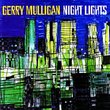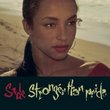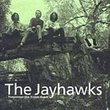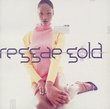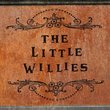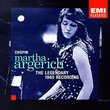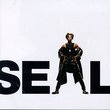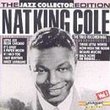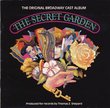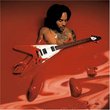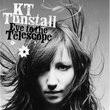| All Artists: Gerry Mulligan Title: What Is There to Say Members Wishing: 1 Total Copies: 0 Label: Sbme Special Mkts. Release Date: 8/4/2009 Genres: Jazz, Pop Style: Cool Jazz Number of Discs: 1 SwapaCD Credits: 1 UPC: 886974927426 |
Search - Gerry Mulligan :: What Is There to Say
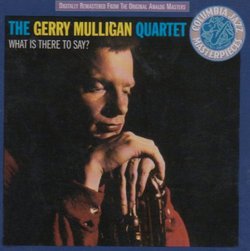 | Gerry Mulligan What Is There to Say Genres: Jazz, Pop
High-definition premium 180gm vinyl pressing of this classic Jazz album. Wax Time Records. 2010. What Is There to Say?, was one of the best albums made by Gerry Mulligan with his piano-less quartet featuring Art Farmer. M... more » |
Larger Image |
CD DetailsSynopsis
Album Description High-definition premium 180gm vinyl pressing of this classic Jazz album. Wax Time Records. 2010. What Is There to Say?, was one of the best albums made by Gerry Mulligan with his piano-less quartet featuring Art Farmer. Mulligan had developed the piano-less, small-group sound in a variety of settings with, among others, trumpeter Chet Baker, trombonist Bob Brookmeyer, and saxophonists Paul Desmond and Zoot Sims. The repertoire includes some familiar tunes, like "My Funny Valentine", a standard normally associated with Chet Baker. "What Is There to Say" and "Just In Time", the other standards given the Mulligan overhaul here, are balanced by Mulligan's "As Catch Can", "Festive Minor", and "Utter Chaos", as well as Farmer's "Blueport" and Crow's "News From Blueport". In his 1991 biography of Gerry Mulligan, Listen! Gerry Mulligan, An Aural Narrative In Jazz, Jerome Klinkowitz sang the praises of this album as the "flawlessly executed album that caught the high point of [Mulligan's] improvisatory lyricism." Mulligan's career was almost 14 years along at this point and this was his first work as a leader for major-label Columbia. Mulligan was just coming into his prime as a player, writer and arranger, with What Is There To Say? providing what Klinkowitz described as a slice of "pure Mulligan ... exquisite proof of Mulligan's gift as a writer and arranger ... as clear an insight into the man and his music as four decades of listening might provide." As a bonus, we have added a rare live version of the title song by the same quartet performed in Sweden shortly after the studio version was made. Similar CDs
Similarly Requested CDs
|
CD ReviewsA Classic Disc from Gerry Mulligan. Louie Bourland | Garden Grove CA | 03/27/2007 (5 out of 5 stars) "Gerry Mulligan's 1959 album "What Is There To Say" is a classic in modern Jazz music. While it hasn't gained the momentum of other Jazz classics such as Miles Davis's "Kind Of Blue" or John Coltrane's "Giant Steps", this album is just as important and pioneering as the above mentioned titles. "What Is There To Say" features Mulligan in his trademark piano-less quartet featuring himself on his usual baritone sax, trumpeter Art Farmer, bassist Bill Crow and drummer Dave Bailey. Together, they deliver a fine set of mostly original material with three standards thrown in (the title track, My Funny Valentine and Just in Time). Standouts on the album include Art Farmer's swinging waltzing "News From Blueport" and Bill Crow's answer to that piece entitled just "Blueport". Elsewhere are fresh renditions of the Mulligan originals "Festive Minor", a fast-charged and energized "As Catch Can" and a smooth free-flowing reading of "Utter Chaos" which was used as a closer to Mulligan's live shows at the time. Musically, Mulligan's quartet on this album is in top notch form. Art Farmer proves to be a more-than-suitable replacement for Chet Baker while Bill Crow and Dave Bailey stay locked into the rhythm without losing a beat. As for Mulligan, his cool-sounding baritone sax never falters and is at its very best here. This is definitely some Classic Gerry Mulligan. Along with "What Is There To Say", I also recommend the "Reunion With Chet Baker" disc as well as "Live At Storyville" and the "Quartet" disc with Paul Desmond on Verve. The "Best Of The Gerry Mulligan Quartet with Chet Baker" disc on Pacific Jazz is also highly recommended." This album defines Fifties Modern Jazz Duncan MacLeod | Kingston, NH | 06/08/2006 (5 out of 5 stars) "If you had no familiarity with either Gerry Mulligan or what "modern jazz" meant in the fifties, this album would be the place to start. Here are two of the best horn players of the decade--black trumpeter Art Farmer, influenced by Miles Davis, Clifford Brown, Kenny Dorham and the whole Bebop school, while himself influencing the younger generation of modern players--and the white Gerry Mulligan, a product of the Lester Young reed-playing school, but with ideas well beyond those of his mentor, and technical mastery untouched by any other baritone sax player. Mulligan's concept of having no instrument play full chords works well--mainly due to the brilliant bass work of Bill Crow, who almost makes the listener forget there is no chord being played. This provides ensemble and soloist alike the freedom to take what often are simple melodies far enough afield to make music that's both emotionally exciting and cerebrally challenging to listen to. The dynamic and often colorful drumming of Dave Bailey enriches a multicourse musical feast. There are times when the ensemble sound almost resembles a full big band. The solo work of each player is superb--especially that of Farmer and Mulligan. Those who like to hum along with the music will find some of these solos about as challenging to follow as any they've ever heard. There is nothing cliched or predictable in the solo ideas. Yet there's no time when any player departs from musical logic or reverts to inane or repetitious random note clustering--much less to honking noise or some of the other bad-taste tactics used by certain big-name players (who shall remain nameless). The picture of the group showing half the players white and half black, and the thoroughly harmonious, wonderfully integrated sound, debunks any idea of such a thing as "white vs black" jazz styles being so radically different or incompatible. It was not unusual for white and black players at the time to play and record together, and stylistic schools were not defined as much in racial terms as they now tend to be. The musical quality and creativity of these performances may spoil the listener for any other Mulligan albums, though he has produced many other good ones. To me, this one is by far his best." Gerry Mulligan Re-Visits The Piano-Less Quartet in 1959 Donnie The B | USA | 07/18/2008 (5 out of 5 stars) "This album is one the best pieces of jazz history to own. Sometimes it's hard to believe so much sound is coming out of only 4 musicians. It also makes you wonder why Dave Bailey (Drums) and Bill Crow (Bass) aren't more fondly remembered for their tight-swinging drive behind this group.
The interaction between Art Farmer and Gerry Mulligan rivals and sometimes exceeds that shown between Chet Baker and Mulligan in the earlier incarnation of Gerry's cool jazz quartet. As to the musicianship of the two horn men, Farmer is more accurate than Baker was and these sessions brought out the best in him. Gerry Mulligan, meanwhile, almost never plays an inappropriate phrase - certainly not on this album. He is in fine form here - the unequalled master of the baritone sax. If you're a Mulligan or Farmer fan - you have to have this one. If you're curious about either artist, I can't think of a better place to start. And if you're a fan of small combo, cool jazz - this is right up your alley. This is one of the easiest, no question about it, 5 star ratings I've given. (Are 6 stars available?) You should also check out "Night Lights". Another version of the hauntingly beautiful "Festive Minor" is heard there." |

 Track Listings (8) - Disc #1
Track Listings (8) - Disc #1![The Original Quartet With Chet Baker [2-CD SET]](https://nationalbookswap.com/cd//m/21/7421/377421.jpg)
